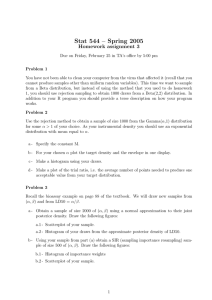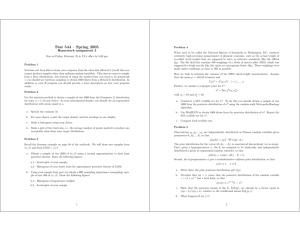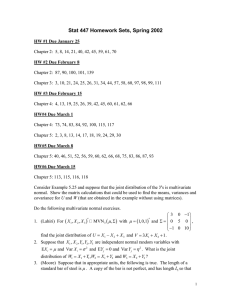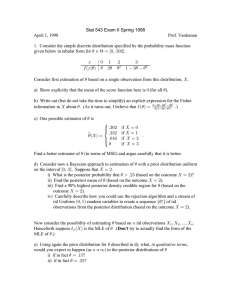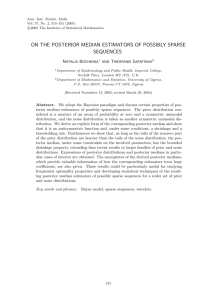Contents
advertisement
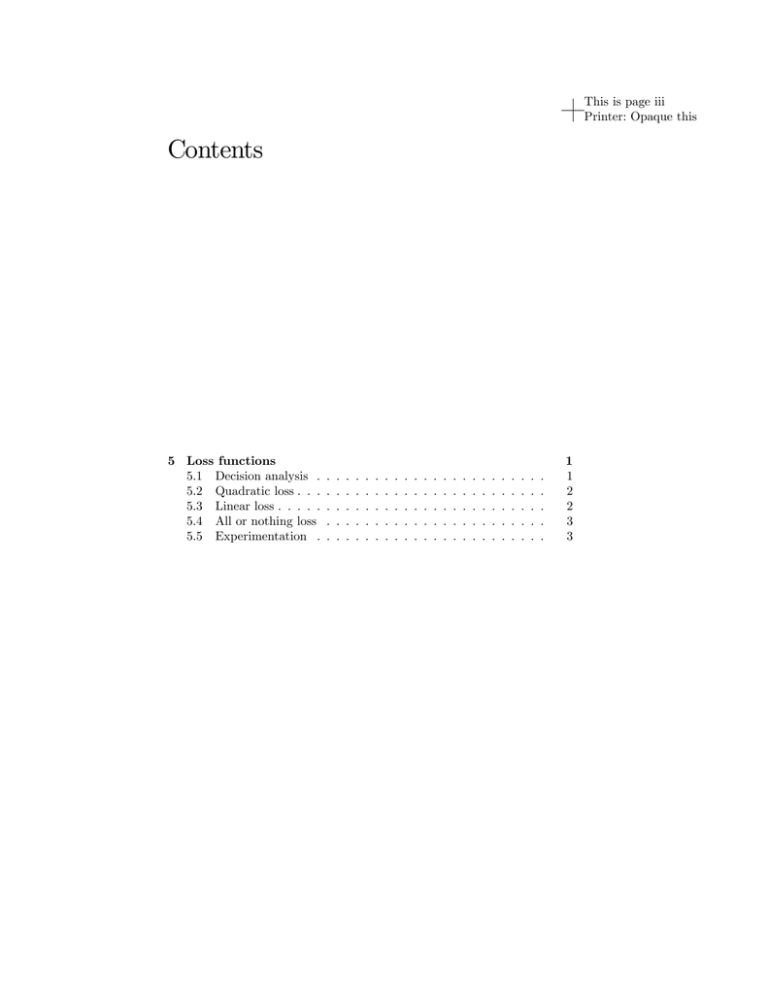
This is page iii Printer: Opaque this Contents 5 Loss functions 5.1 Decision analysis . 5.2 Quadratic loss . . . 5.3 Linear loss . . . . . 5.4 All or nothing loss 5.5 Experimentation . . . . . . . . . . . . . . . . . . . . . . . . . . . . . . . . . . . . . . . . . . . . . . . . . . . . . . . . . . . . . . . . . . . . . . . . . . . . . . . . . . . . . . . . . . . . . . . . . . . . . . . . . . . . . . . . . . . . 1 1 2 2 3 3 This is page 1 Printer: Opaque this 5 Loss functions 5.1 Decision analysis Bayesian analysis is combined with decision analysis via explicit recognition of a loss function. Relative to classical statistics this is a strength as a loss function always exists but is sometimes not acknowledged. For simplicity 1 and brevity we’ll explore symmetric versions of a few loss functions. Let denote an estimator for , c , denote a loss function, and p ( | y) denote the posterior distribution for given evidence y. A sensible strategy for consistent decision making involves selecting the estimator, , to minimize the average or expected loss. minE [loss] = minE c , Briefly, for symmetric loss functions, we find the expected loss minimizing estimator is the posterior mean for a quadratic loss function, is the median of the posterior distribution for a linear loss function, and is the posterior mode for an all or nothing loss function. 1 The more general case, including asymmetric loss, is addressed in chapter 4 of Accounting and Causal Eects: Econometric Challenges. 2 5. Loss functions 5.2 Quadratic loss 2 Let c , = for > 0, then (with support from a to b) minE c , = min b a 2 p ( | y) d The first order conditions are b 2 d p ( | y) d = 0 d a Expansion of the integrand gives b 2 d 2 + 2 p ( | y) d = 0 d a or b b 2 d 2 2 p ( | y) d + p ( | y) d = 0 d a a Dierentiation gives and the solution is where b a 2 2 = b p ( | y) d a a =0 b p ( | y) d p ( | y) d is the posterior mean. 5.3 Linear loss Let c , = for > 0, then minE c , = min a b p ( | y) d The first order conditions are b d p ( | y) d = 0 d a Rearrangement of the integrand gives b d p ( | y) d p ( | y) d = 0 d a 5.4 All or nothing loss 3 or d F | y a p ( | y) d 1F |y =0 b d + p ( | y) d where F | y is cumulative posterior probability evaluated at . Dierentiation gives F | y + p | y p |y = 0 1F | y 1p | y + 1p |y or F |y 1F |y 2F |y 1 = 0 = 0 and the solution is 1 F |y = 2 or the median of the posterior distribution. 5.4 All or nothing loss Let >0 c , = 0 if if = = Then, we want to assign the maximum value of p ( | y) or the posterior mode. 5.5 Experimentation The science of experimentation and evaluation of evidence is a deep and subtle art. Essential ingredients include careful framing of the problem (theory development), matching of data to be collected with the frame, and iterative model specification that complements the data and problem frame so that causal eects can be inferred. Consistent evaluation of evidence draws from the posterior distribution which is proportional to the product of the likelihood and prior. When they combine to generate a recognizable posterior distribution, our work is made simpler. Next, we briefly discuss conjugate families which produce recognizable posterior distributions.


